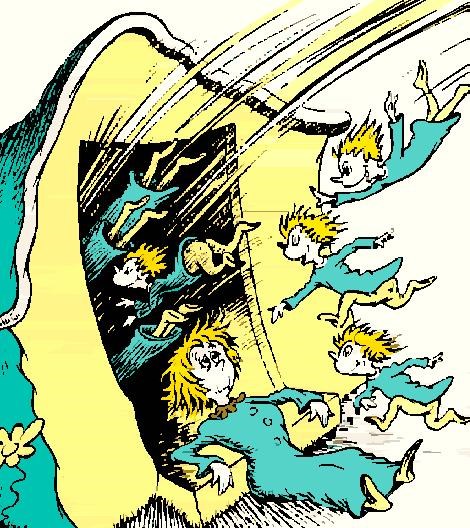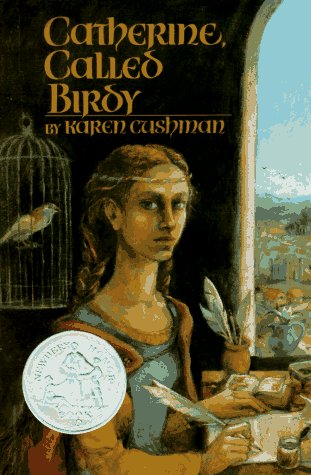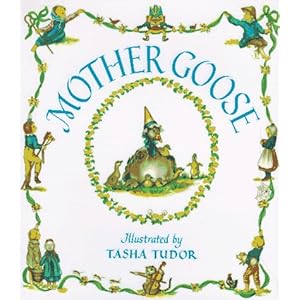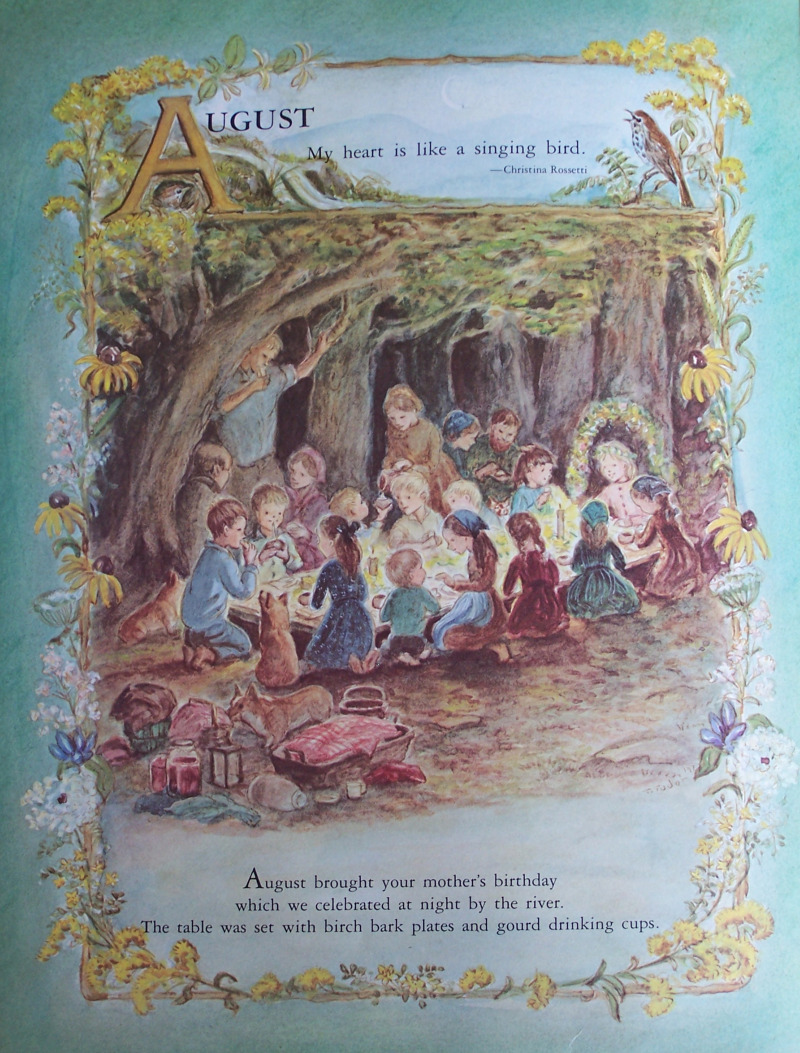In honor of my little sister, currently at the hospital having a baby, I dedicate this post.
In all the discussion of naming a baby, the best advice one can find comes from Dr. Seuss. I grew up with this story (really more of a poem) and loved it. We actually had the record version of this book. We wore that record smooth listening to it over and over!

The stories in this book, in particular the story of 23 Daves still provides good humor when read to my child, and/or my nieces and nephews.
Regrettably Poor Mrs. McCave, who had 23 sons, has named them all Dave (Dave McCave is a great name, but it would be difficult with 23 of them on hand). The names she ponders that she could have chosen are great. But as the poem says at the end, "but she didn't do it, and now it's too late". Good advice - don't name your children dumb names!!

I've currently been calling the unborn baby "Snimm". I think initially it was "Sunny Jim", but he seemed more like a Snimm to me. I'm sure once he is born, he will readily fit into the name he is given.
And once he is a bit older, I will scare him with the reading of "What was I Scared Of?" - with the scary pale green pants with no one inside them (also found within this book).

From the book:
The Sneetches and other Stories
by Dr. Seuss

Too Many Daves
by Dr. Seuss
Did I ever tell you that Mrs. McCave
Had twenty-three sons and she named them all Dave?
Well, she did. And that wasn’t a smart thing to do.
You see, when she wants one and calls out, “Yoo-Hoo!
Come into the house, Dave!” she doesn’t get one.
All twenty-three Daves of hers come on the run!
This makes things quite difficult at the McCaves’
As you can imagine, with so many Daves.
And often she wishes that, when they were born,
She had named one of them Bodkin Van Horn
And one of them Hoos-Foos. And one of them Snimm.
And one of them Hot-Shot. And one Sunny Jim.
And one of them Shadrack. And one of them Blinkey.
And one of them Stuffy. And one of them Stinkey.
Another one Putt-Putt. Another one Moon Face.
Another one Marvin O’Gravel Balloon Face.
And one of them Ziggy. And one Soggy Muff.
One Buffalo Bill. And one Biffalo Buff.
And one of them Sneepy. And one Weepy Weed.
And one Paris Garters. And one Harris Tweed.
And one of them Sir Michael Carmichael Zutt
And one of them Oliver Boliver Butt
And one of them Zanzibar Buck-Buck McFate …
But she didn’t do it. And now it’s too late.
In all the discussion of naming a baby, the best advice one can find comes from Dr. Seuss. I grew up with this story (really more of a poem) and loved it. We actually had the record version of this book. We wore that record smooth listening to it over and over!

The stories in this book, in particular the story of 23 Daves still provides good humor when read to my child, and/or my nieces and nephews.
Regrettably Poor Mrs. McCave, who had 23 sons, has named them all Dave (Dave McCave is a great name, but it would be difficult with 23 of them on hand). The names she ponders that she could have chosen are great. But as the poem says at the end, "but she didn't do it, and now it's too late". Good advice - don't name your children dumb names!!

I've currently been calling the unborn baby "Snimm". I think initially it was "Sunny Jim", but he seemed more like a Snimm to me. I'm sure once he is born, he will readily fit into the name he is given.
And once he is a bit older, I will scare him with the reading of "What was I Scared Of?" - with the scary pale green pants with no one inside them (also found within this book).

From the book:
The Sneetches and other Stories
by Dr. Seuss

Too Many Daves
by Dr. Seuss
Did I ever tell you that Mrs. McCave
Had twenty-three sons and she named them all Dave?
Well, she did. And that wasn’t a smart thing to do.
You see, when she wants one and calls out, “Yoo-Hoo!
Come into the house, Dave!” she doesn’t get one.
All twenty-three Daves of hers come on the run!
This makes things quite difficult at the McCaves’
As you can imagine, with so many Daves.
And often she wishes that, when they were born,
She had named one of them Bodkin Van Horn
And one of them Hoos-Foos. And one of them Snimm.
And one of them Hot-Shot. And one Sunny Jim.
And one of them Shadrack. And one of them Blinkey.
And one of them Stuffy. And one of them Stinkey.
Another one Putt-Putt. Another one Moon Face.
Another one Marvin O’Gravel Balloon Face.
And one of them Ziggy. And one Soggy Muff.
One Buffalo Bill. And one Biffalo Buff.
And one of them Sneepy. And one Weepy Weed.
And one Paris Garters. And one Harris Tweed.
And one of them Sir Michael Carmichael Zutt
And one of them Oliver Boliver Butt
And one of them Zanzibar Buck-Buck McFate …
But she didn’t do it. And now it’s too late.















































